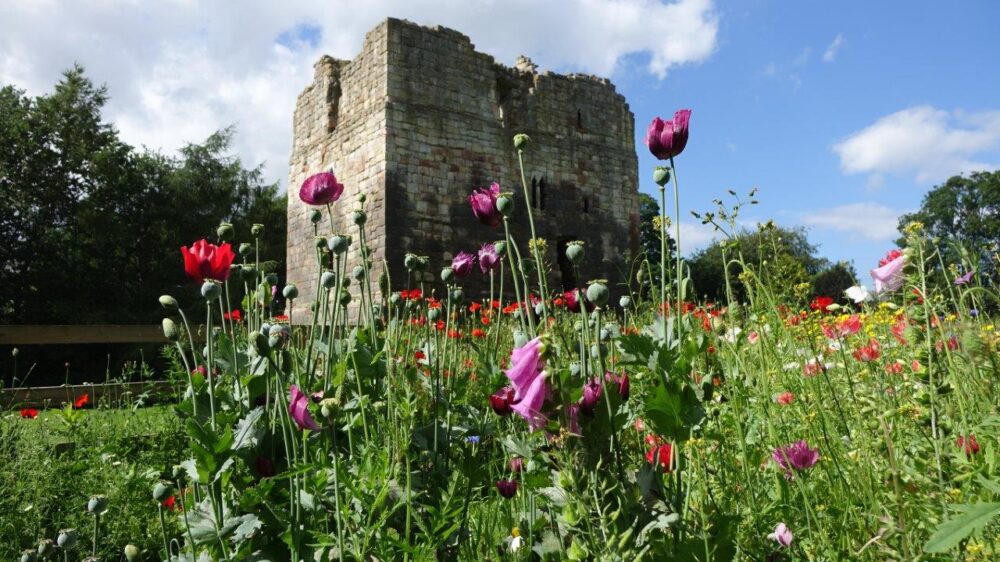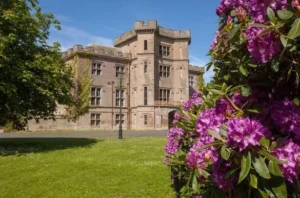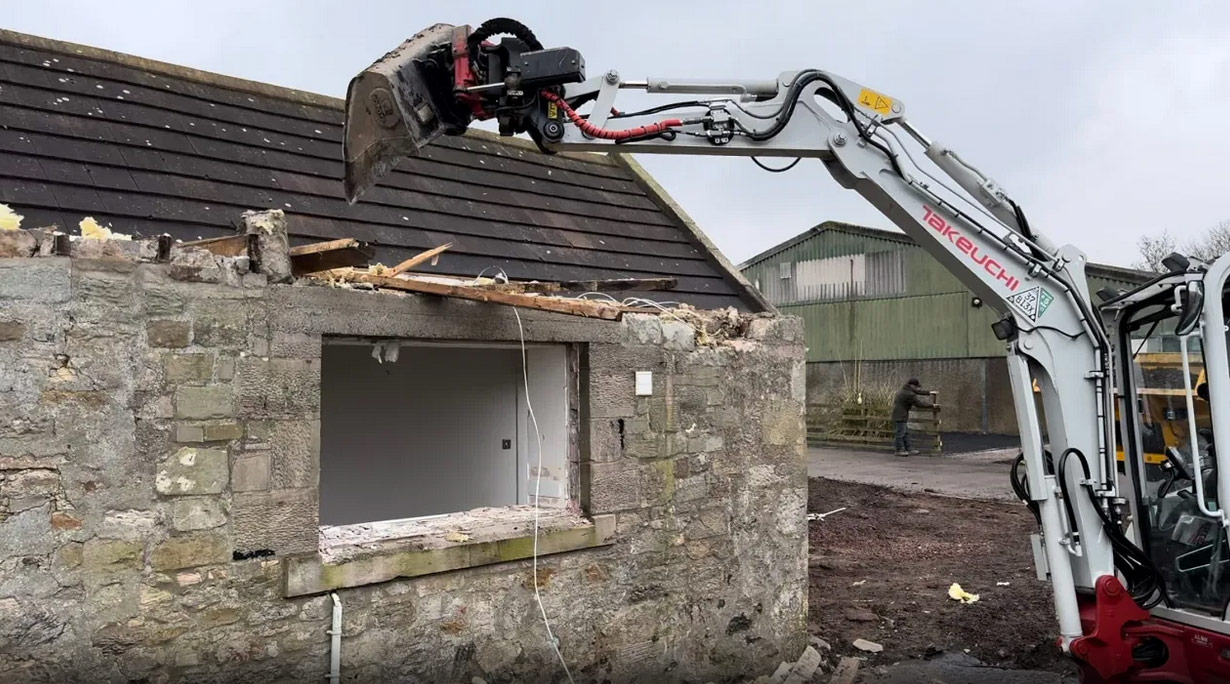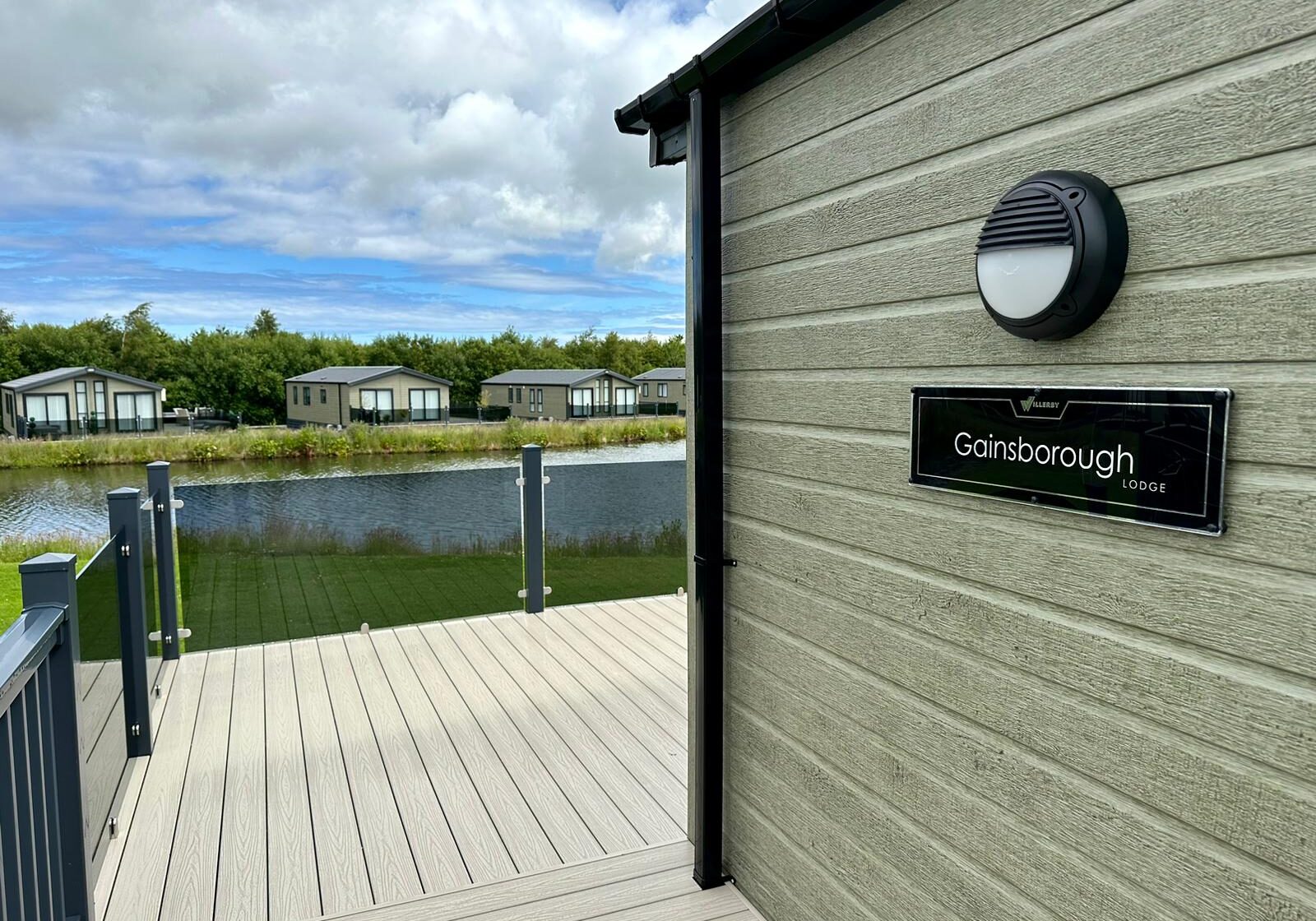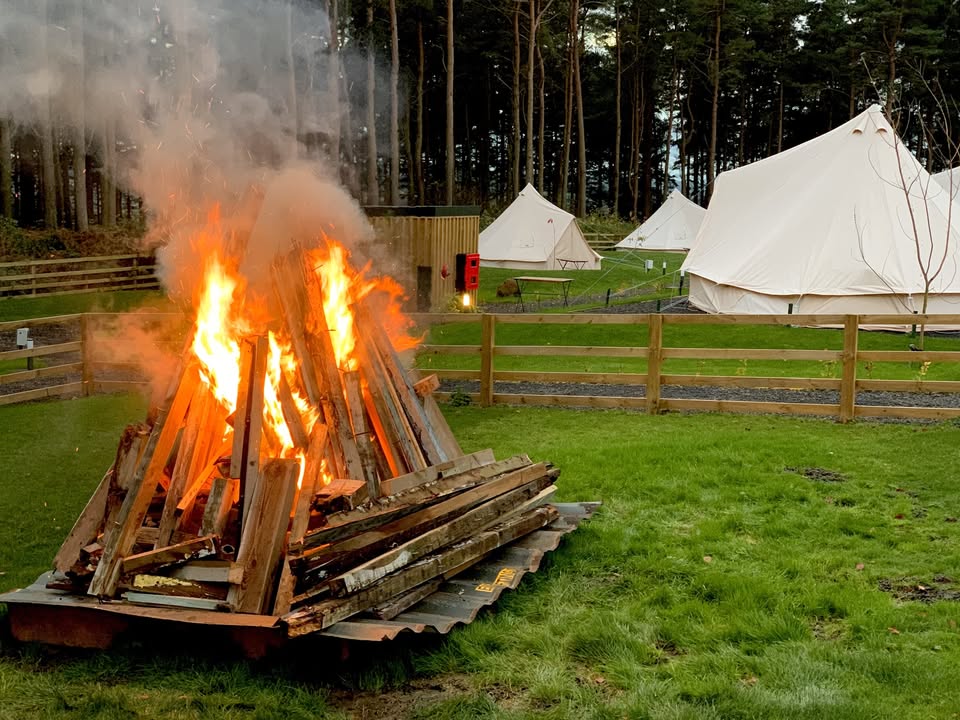Northumberland, often called “castle country,” boasts more castles than any other county in England. With over 70 castle sites—many still standing proudly, others now hauntingly beautiful ruins—this northern land is steeped in stone, legend, and legacy. But why does this peaceful corner of the country have such a turbulent and fortified past?
Let’s explore the story behind Northumberland’s mighty castles.
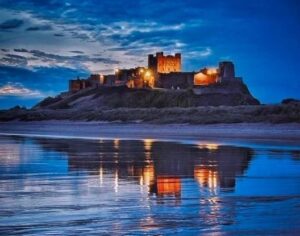
Bamburgh Castle – Credit @darrensphotos
A Frontier Under Siege
Northumberland’s location played a crucial role in shaping its landscape. Nestled on the border between England and Scotland, it was once the frontline of centuries of cross-border conflict. For hundreds of years, this region bore the brunt of battles, raids, and invasions during the Wars of Scottish Independence, the Anglo-Scottish wars, and frequent skirmishes between feuding border clans.
Castles were a necessity here—not a luxury. They were built not only as strongholds and military posts but as symbols of power and protection in a land that often changed hands.
The Age of Norman Conquest and Expansion
After the Norman conquest of England in 1066, William the Conqueror and his barons quickly recognized the need to secure the northern reaches of the kingdom. Castles became essential to impose control, monitor the unruly border, and quell local resistance.
Some of Northumberland’s most iconic castles—like Alnwick, Warkworth, and Bamburgh—have their origins in this period. Constructed as mighty fortresses, they later evolved into noble residences but always retained their defensive edge.
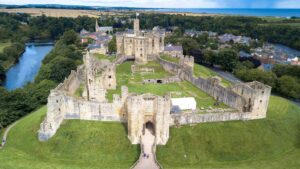
Warkworth Castle – Credit Visit Northumberland
The Border Reivers and Local Turmoil
Even beyond the battles between kingdoms, Northumberland was shaped by internal conflict. From the 13th to the 17th century, the Border Reivers—clan-based raiders from both sides of the Anglo-Scottish border—terrorised the region. Livestock theft, arson, and feuds were everyday occurrences.
In response, local landowners fortified their homes, leading to a proliferation of pele towers—smaller fortified residences found throughout the county. These structures, while not castles in the traditional sense, added to the region’s reputation for fortification and self-defence.
Castles as Symbols of Status and Power
As peace gradually returned to the region, many of Northumberland’s castles were transformed from military fortresses into grand homes. Nobles invested in comfort and aesthetics, turning once-bleak strongholds into palatial residences. The Percy family, for example, turned Alnwick Castle into a spectacular seat of power—now one of the largest inhabited castles in England and a beloved filming location for everything from Harry Potter to Downton Abbey.
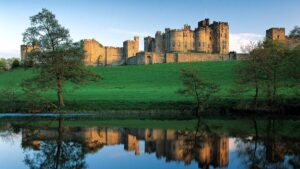
Alnwick Castle – Credit to Visit Northumberland
Preserving the Past
Today, Northumberland’s castles are more than just remnants of conflict—they’re cherished cultural landmarks. Visitors can explore towering turrets at Bamburgh, wander the romantic riverside ruins of Warkworth, and marvel at the dramatic cliffside presence of Dunstanburgh.
Each castle tells a different chapter of the region’s history—of ambition, defence, survival, and splendour.
Our very own Barmoor Castle has an interesting history too
Tucked away in the peaceful countryside near Lowick, Barmoor Castle is more than just a beautiful building—it’s a living reminder of Northumberland’s turbulent past. While the grand, Gothic-style mansion you see today was built in the 19th century, the site has a rich and dramatic history dating back to the 11th century.
From Norman Roots to Border Defences
The story of Barmoor begins shortly after the Norman Conquest, when the estate was granted to the Muschamp family. By the 13th century, they had built a fortified manor house here—a necessary precaution in a region often caught in the crossfire of Anglo-Scottish rivalries.
As tensions mounted between the two kingdoms, Barmoor’s strategic importance grew. In 1341, King Edward III granted the Muschamps a licence to crenelate their home. This royal permission allowed them to add battlements and further fortify the property, turning it into a defensible stronghold. This upgrade came just decades before the infamous Battle of Flodden in 1513, which was fought only a few miles away.
Decline, Change, and a Romantic Revival
Over time, the fortunes of the Muschamp family faded, and the estate passed through several hands. The medieval building eventually fell into ruin—until a new chapter began in the early 19th century.
In 1801, the Sitwell family commissioned the construction of the current Gothic Revival mansion, drawing inspiration from medieval castles with features like crenelated towers, pointed arch windows, and decorative battlements. Though no longer a defensive structure, the new Barmoor Castle embraced the romance of its feudal past while offering the comforts of a grand country house.
Barmoor Today
While the castle itself is now privately owned and not open to the public, the surrounding Barmoor Castle Country Park welcomes visitors seeking a peaceful retreat in the stunning Northumberland landscape. The building remains an eye-catching centrepiece—steeped in centuries of history, myth, and architectural charm.
Why It Matters
Barmoor Castle is just one of many fortified sites that dot Northumberland’s rugged terrain, but its story encapsulates the region’s unique blend of warfare, nobility, and reinvention. From medieval battlements sanctioned by kings to romantic 19th-century reinventions, Barmoor reflects the enduring spirit of a land that has always stood on the edge—of kingdoms, of conflict, and of history itself.
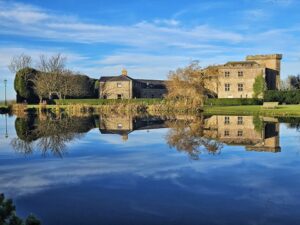
Barmoor Castle – Credit @darrensphotos
Thinking of exploring Northumberland’s castles? Barmoor may not offer public tours, but its legacy is woven into the fabric of this historic region. Add it to your list of must-see landmarks on your next adventure north. Feel free to pop in and say hello and meet the current owners too! For more information, please call our team on 01289 388376 or email Michael@barmoorcastle.co.uk and we will be happy to answer any questions you may have.
Final Thoughts
The sheer number of castles in Northumberland isn’t a coincidence—it’s a reflection of its turbulent past, strategic importance, and enduring legacy. These fortresses weren’t just built to withstand attacks; they were shaped by the need to survive in one of England’s most hotly contested and storied landscapes.
Today, they offer a fascinating window into the past, and a breath-taking backdrop for anyone exploring this wild and wonderful county.
